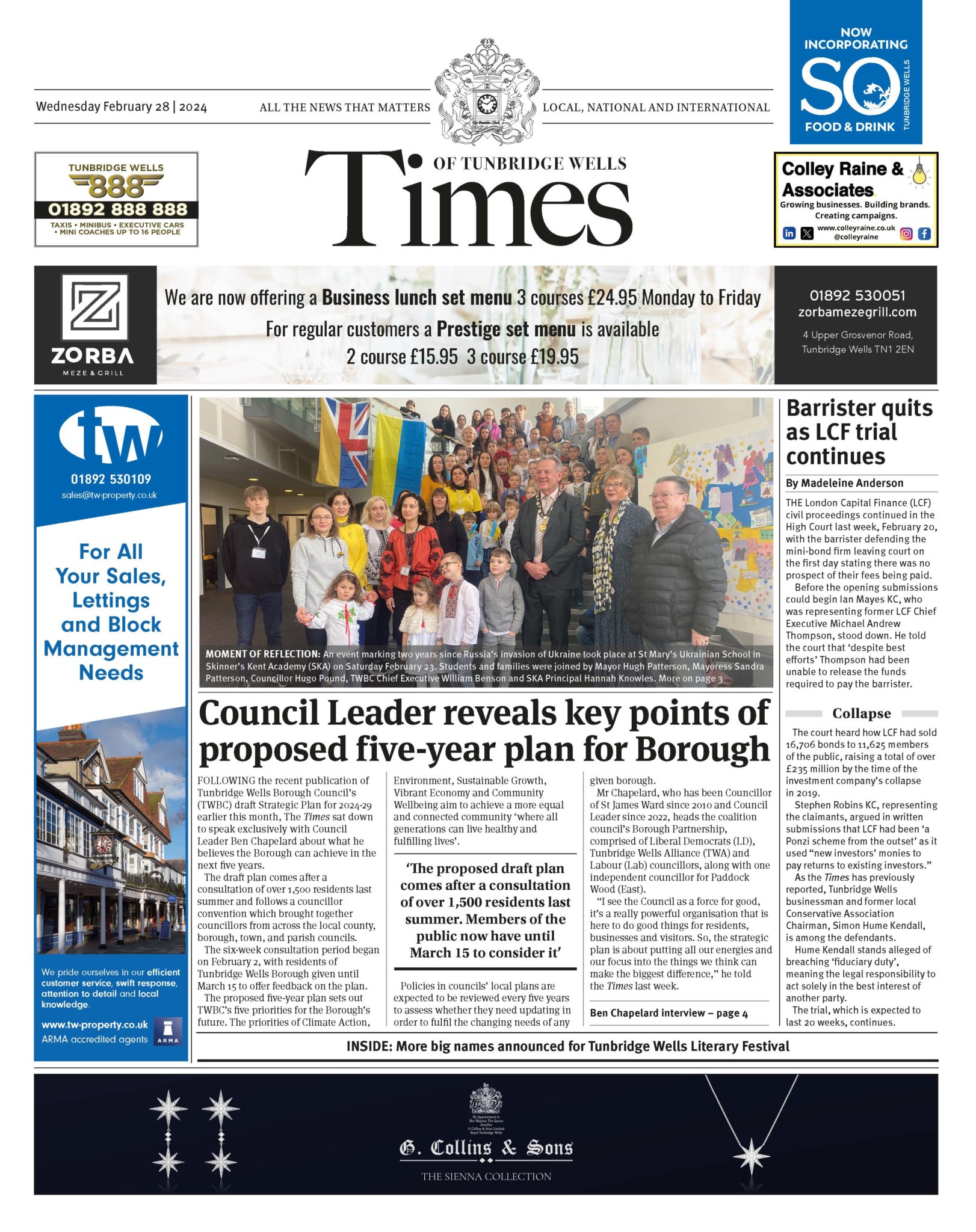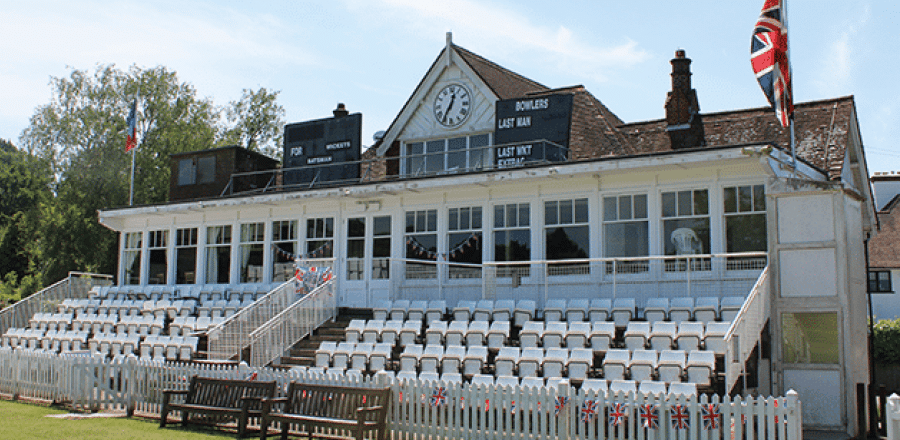The pulse-jet propelled V1 device, known as a ‘doodlebug’, was one of two that fell on the Racecourse Sportsground during the summer of 1944.
A plaque was installed this year to mark the spot where one fell at 7.13pm on July 12; another came down on Tinker’s Island at 6.47pm on June 19.
The latter landfall was caused when a Spitfire pilot ‘tipped’ the bomb with his wing to divert its course to stop it striking -neighbouring houses.
The explosion damaged 500 shops and houses in the High Street and Barden Road area.
Twelve-year-old Michael Osborne was killed after sustaining shrapnel injuries while he was playing hide-and-seek.
‘Rodney could remember people trying to clamber over him to get pieces of shrapnel. He thought that was awful – but that’s what they used to do’
Local resident Harry Elliott described in the Times how he cheated death – he was supposed to be with Michael but they had fallen out over riding the latter’s new bicycle.
As a result of the article, Yvonne Vickery, née Johnson, contacted the Times to describe how she had run over to help her younger brother Rodney in the blaze.
The nonagenarian, who lives in Tunbridge Wells, said: “Michael was our cousin, we all lived in Danvers Road.
“We played in the river and on the island all the time.”
She had a twin sister, Dolores, who also lives in Tunbridge Wells; Rodney, who was four years younger than them, also had a twin, Charmaine.
Mrs Vickery was 15 at the time, and the day’s events made an indelible impression.
“I was walking over the playing field with a friend and we saw the doodlebug come over and the plane that tipped it,” she said.
“We heard the tinkling of glass, which must have been along Barden Road. The first thing I saw was my brother Rodney crawling out of the rubble, so I ran over and pulled him out.
SHAPSHOT OF HISTORY: (Middle row) Yvonne and Dolores, (front) Charmaine and Rodney at home in Danvers Road after the wedding of their sister Delmarita and Eric Parkhurst (back)
“He had shrapnel in his leg. He had told Michael ‘don’t look up’.
“But of course, being a child, he did look up and he got shrapnel in his head.
“Rodney could remember people trying to clamber over him to get pieces of shrapnel.
“He thought that was awful – but that’s what they used to do.”
Anita Johnson, Rodney’s wife, contacted the Times from Australia to say: “Rodney was unable to run, or even to stand. His young body had been peppered with pieces of shrapnel.
“His legs had been wounded so badly that walking was impossible.
“The showers of metal pieces landing on and around him sounded deafeningly loud like an extremely heavy rainstorm.
‘He told me something he had never said before: how pleased he was to see a familiar face when I got him out. What a coincidence it was’
“One of the first people to arrive on the scene was Rodney’s sister Yvonne. She was able to keep the gathering crowd from pressing in too close to him so there was room around her little brother.”
Michael was taken to Pembury Hospital, where he died three days later. “It affected my brother very badly,” said Mrs Vickery. “It would, a child like that. It was traumatic. We were evacuated soon afterwards.”
Mrs Johnson added: “When Rodney saw that Michael’s bed was empty, he asked ‘Where is Michael?’ but was told he had been moved. That is the only information he was given at the time.
“Rodney had surgeries on his legs and he eventually regained his mobility. He had many trips to the hospital for treatment. Although much of the shrapnel was removed, he still has some which visibly protrudes under the skin.”
After the war Rodney did his National Service in the Royal Navy before emigrating to Australia.
Mrs Vickery said: “I was talking to him about it and he told me something he had never said before: how pleased he was to see a familiar face when I got him out. What a coincidence it was.
“We were more interested than frightened,” she admitted. “If it hadn’t been for the fire, we probably wouldn’t have noticed, we would have just carried on.”
A song of Tinker’s Island
Singer-songwriter Pete Metcalfe has written a song about the V1 doodlebug entitled Tinker’s Island.
Mr Metcalfe is a guitar teacher who regular plays at the Tonbridge Folk Club (Nellie’s) at the Flying Dutchman pub in Hildenborough. To hear the song, visit petemetcalfe.co.uk/songs
Tinker’s Island
My name is Harry Elliott
and I live in Tonbridge Town,
not Royal Tunbridge Wells you see –
that’s the one that wears the crown –
and it’s July 1944,
on a clear and peaceful day,
we’re off for our game of hide and seek,
the open fields are ours for play.
Michael’s got a new red bike ,
his dad says he can ride.
My eyes light up when I see it shine
and I can see his pride.
I want a go; he tells me no.
He pulls back, my anger flares,
rides away and I shout with words
for him I no longer care.
One day on Tinker’s Island
upon the Medway shore,
our summer peace was broken
when we were brought into this war.
A sound rings out from in the blue
on the war path a V1 comes
in close pursuit a Spitfire looms
’fore its job will soon be done.
Brought to the ground its metal flies,
the grass is all aflame,
the army keeping all at bay
search through the twisted frame.
Closer now, there’s a blood-stained shoe,
it’s Rodney’s I knew straightway,
and there lays Michael, it can’t be true
this afternoon we were to play.
If we’d not nearly come to fight
he’d have had no need to flee
and here in these open English fields
to ride and play he would still be.
This day on Tinker’s Island
upon the Medway shore,
our summer peace was broken
when we were brought into this war.







